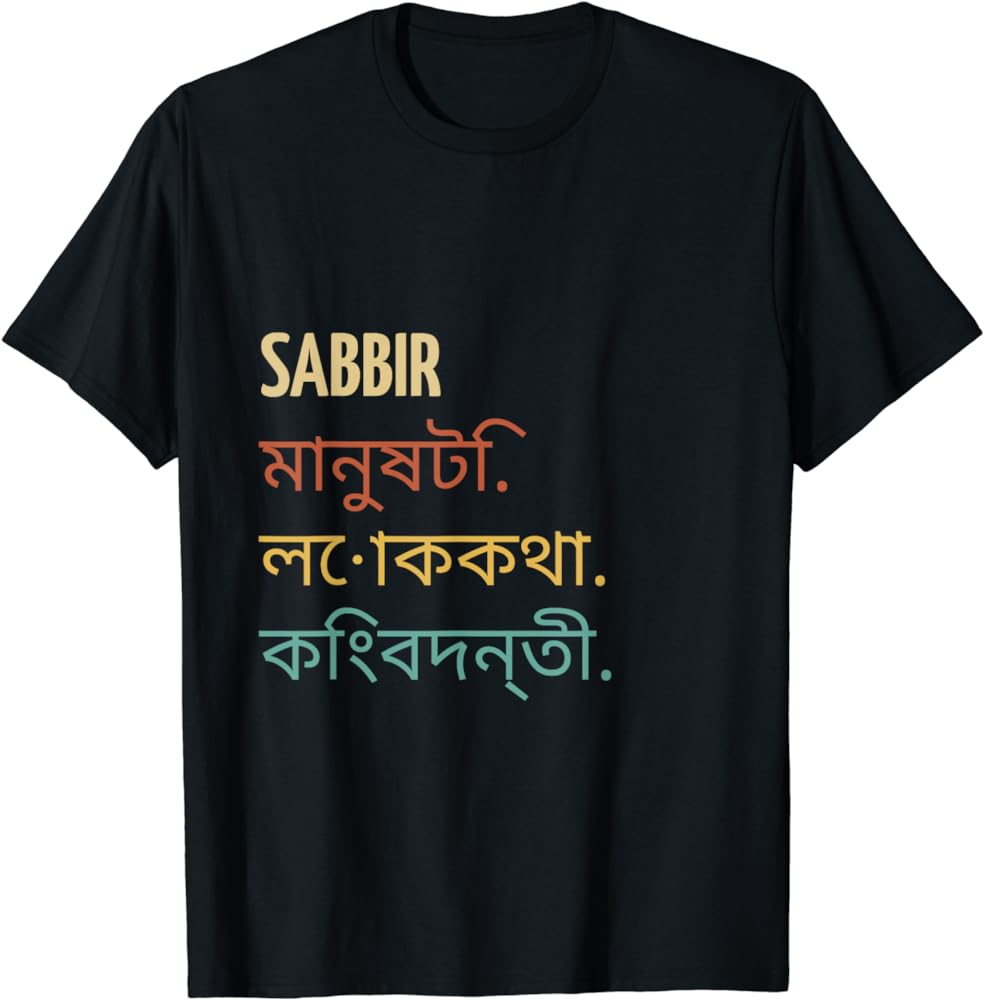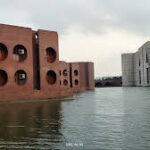The old name of Bangladesh is East Pakistan. It was known as East Pakistan before gaining independence and being renamed Bangladesh in 1971.
The history of Bangladesh is rich and complex, with a long and storied past that has shaped its identity and culture. From the ancient civilizations that once thrived in the region to the struggles for independence and the modern challenges it faces, Bangladesh has a compelling story to tell.
Its geography, people, and customs all contribute to its unique character. As the country continues to develop and grow, its historical roots remain an integral part of its present and future. Understanding the old name of Bangladesh helps to appreciate its journey and evolution into the nation it is today.

Credit: www.facebook.com
The Ancient Name
The Ancient Name of Bangladesh holds a rich history and cultural heritage dating back centuries. Let’s dive into the ancient names associated with the region.
Pundranagar
Legend has it that the ancient name, Pundranagar, was closely tied to the kingdom of Pundra, an important region in the Indian subcontinent. This name reflects the historical significance and influence the land held during ancient times.
Vanga
Another ancient name of Bangladesh, Vanga, was referred to in Sanskrit literature and ancient texts. It signifies the early roots and historical prominence of the land, offering a glimpse into the rich past of the region.
Historical Significance
Before being called Bangladesh, this land was known by various names throughout history. One of the old names of Bangladesh is ‘Bengal’. Bengal’s historical significance lies in its rich trade and civilization that spanned centuries, making it a thriving hub in the Indian subcontinent.
Trade And Civilization
Bengal’s strategic location on the Bay of Bengal and its abundant natural resources played a pivotal role in shaping its historical importance. Due to its proximity to the sea, Bengal became a prime center for trade and commerce. Merchants from different parts of the world, including the Arabs, Persians, Turks, and Europeans, ventured into Bengal for its lucrative trade opportunities.
The flourishing trade in Bengal attracted merchants from far and wide, making it a melting pot of cultures and civilizations. The exchange of goods and ideas fostered rapid growth and development, transforming the region into a vibrant cosmopolitan hub.
Influence On Culture
Bengal’s rich history also had a profound influence on its culture. The land’s amalgamation of various civilizations resulted in a unique blend of traditions, languages, arts, and architecture. Bengal’s cultural heritage was shaped by the influences of Hinduism, Buddhism, Islam, and British colonialism.
The vibrant cultural tapestry of Bengal is evident through its folk music and dances, literature, festivals, and religious practices. From the classical music genre known as Bangla Shastriya Sangeet to the renowned dance form called Gaudiya Nritya, Bengal’s cultural expressions continue to capture the hearts of people even today.
Transition To Bangladesh
Bangladesh was previously known as East Pakistan until gaining independence in 1971. Its transition to Bangladesh marked a significant historical shift, leading to the emergence of a unique national identity and distinct cultural heritage.
Bangladesh, a vibrant nation located in South Asia, was not always known by this name. It went through a remarkable transition to become the Bangladesh that we know today. Previously, it was referred to by a different name, which holds historical significance. In this blog post, we will explore the old name of Bangladesh and delve into the factors that led to its independence and subsequent transformation.Role Of Language
Language has played a pivotal role in shaping the old and new identity of Bangladesh. As a predominantly Bengali-speaking country, Bangladesh was originally a part of the region known as Bengal. Under British rule, it was included in the Bengal Presidency along with present-day India and parts of Pakistan. This region was also referred to as East Bengal and later as East Pakistan. However, the people of Bengal, particularly the Bengali-speaking majority, felt a strong sense of cultural and linguistic distinctiveness, which led to the demand for recognition and autonomy. The Language Movement of 1952, a significant turning point in the history of Bangladesh, marked the beginning of the struggle for asserting the importance of Bengali language and its recognition as a official language.Impact Of Independence
The year 1971 witnessed a defining moment in the history of Bangladesh as it fought for its independence from Pakistan. The Bangladesh Liberation War, a nine-month-long armed conflict, marked the culmination of years of political and cultural unrest. It was a battle fought not just for self-determination but also for the preservation of language, culture, and heritage. The war resulted in the birth of a new nation, establishing Bangladesh as an independent state. The new name represented the nation’s unique identity and aspirations for development and progress in various domains. Bangladesh adopted a new constitution, marking a significant shift in its political landscape. Today, Bangladesh is recognized as an independent and sovereign nation, making remarkable strides in various fields, including socio-economic development, education, and women empowerment. Despite its humble beginnings, Bangladesh has emerged as a resilient and determined nation, embracing its diverse heritage while embracing its own unique cultural identity. In conclusion, the transition to Bangladesh represented a defining moment in the history of the nation. Language played a crucial role in asserting the identity of the Bengali-speaking people, ultimately leading to the demand for autonomy and independence. The impact of independence was profound, bringing about a new era of progress and development. Bangladesh stands as a testament to the power of language, culture, and resilience in shaping the destiny of a nation.
Credit: www.thelancet.com
Legacy In Modern Context
Cultural Heritage
Bangladesh, a country rich with cultural heritage, has a fascinating history that dates back centuries. Its old name, East Bengal, serves as a window into its past. This name was used prior to the partition of British India in 1947, when it was part of the larger region of Bengal. Today, this legacy of the old name still holds significance in the modern context of Bangladesh.
East Bengal, also known as Purbo Bangla in Bengali, carries the weight of centuries of cultural exchange, creativity, and tradition. The region was home to vibrant literary movements, artistic endeavors, and religious diversity, making it a melting pot of various cultures and beliefs. This cultural heritage continues to shape the identity of Bangladesh, serving as a source of inspiration for its people.
National Identity
The old name, East Bengal, plays an integral role in shaping the national identity of Bangladesh. It symbolizes the struggles and sacrifices of its people, who fought for independence and self-determination. The name serves as a reminder of the long and arduous journey the nation has undertaken to establish itself as an independent and sovereign state.
Additionally, the old name holds a strong emotional connection to the language movement of 1952, which ultimately led to the recognition of Bengali as the official language of Bangladesh. This linguistic identity, intertwined with the old name, reinforces the sense of national pride and solidarity among the people of Bangladesh.
Preserving The Past
Archeological exploration plays a crucial role in uncovering the historic legacy of Bangladesh’s past. Through systematic excavations and meticulous research, archeologists bring forth artifacts, structures, and remnants of civilizations long gone. These remarkable findings help us understand the ancient name of Bangladesh, which, in the annals of history, was referred to as “Banga” or “Bongo.”
Preserving the rich heritage of a nation is not only a matter of cultural importance but also a means of honoring the substantial contributions of our ancestors. In Bangladesh, heritage conservation is considered a significant endeavor. It ensures the protection and restoration of historical sites and monuments, providing invaluable insights into the old name of Bangladesh.

Credit: www.amazon.com
Frequently Asked Questions On What Is The Old Name Of Bangladesh?
What Was Bangladesh Called Before It Gained Independence?
Bangladesh was known as East Pakistan before it gained independence from Pakistan in 1971.
Why Was Bangladesh Formed As A Separate Country?
Bangladesh was formed as a separate country to address the political and cultural differences between East and West Pakistan and to establish self-governance for the people of East Pakistan.
When Did Bangladesh Become An Independent Country?
Bangladesh became an independent country on March 26, 1971, after a nine-month-long war for independence from Pakistan.
What Is The Significance Of The Name Bangladesh?
The name Bangladesh means “Bengal country” in the Bengali language. It reflects the geographical and cultural identity of the region, which is predominantly Bengali-speaking.
Conclusion
To summarize, the old name of Bangladesh was East Pakistan. Understanding the history and origins of a country is crucial to appreciating its cultural heritage. Learning about the old name of Bangladesh allows us to delve into the rich tapestry of its past.
It reminds us of the struggles and sacrifices made by the Bangladeshi people to establish their identity and independence. By exploring the past, we gain a deeper understanding and appreciation for the present-day Bangladesh.



Md Momin